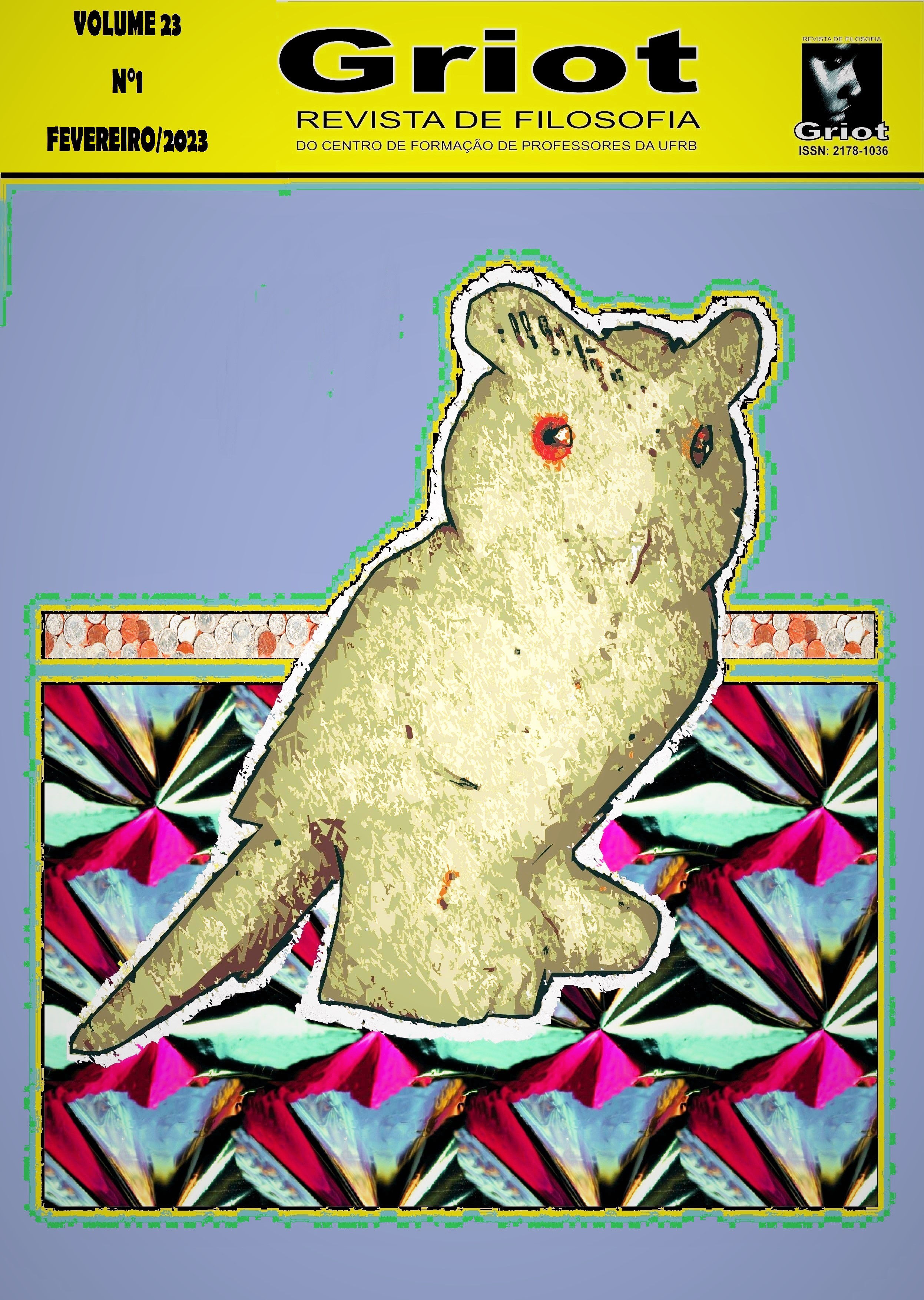The effemerity of entities and God's eternity in the third tomasic way
DOI:
https://doi.org/10.31977/grirfi.v23i1.3166Keywords:
Entity; Ephemeral; Being; God; Eternity.Abstract
The fugacity is characteristic of every being, because it receives or being and has no case for its existence. Eternity is the unique attribute of Being, of God, which is necessary in itself. In this sense, this article aims to reflect on the ephemerality of corruptible and incorruptible beings, as well as on the eternity of God in the third way of Thomas. In this way, in the first place, the aforementioned proof of the existence of God will be presented. In a second moment, a note will be made about the ephemerality of corruptible entities, which suffer the effects of the dynamics of generation and corruption. Afterwards, it will be seen that incorruptible beings also have an ephemeral existence, as they can be annihilated by God. Finally, it will be elucidated that God is the Being necessary in itself and therefore eternal. In view of the fact that God grants and maintains the existence of all beings.
Downloads
References
A BÍBLIA DE JERUSALÉM. São Paulo: Paulus, 2000.
AQUINO. Tomás de. Suma contra os gentios I. Tradução de Joaquim F. Ferreira. E Eliane da Costa Nunes Brito (assistente). São Paulo: Loyola, 2015.
AQUINO. Tomás de. Suma contra os gentios II. Maurílio José de Oliveira Camello. São Paulo: Loyola, 2015.
AQUINO. Tomás de. Suma teológica: Teologia, Deus, trindade, volume 1: I parte: Questões 1-43. Tradução de Aldo Vannuchi et al. São Paulo: Loyola, 2016.
AQUINO, Tomás de. A criação, a conservação e o governo do mundo. Tradução de Paulo Faitanin, Rodolfo Petrônio, Bernardo Veiga e Rafael N. Godinho. Campinas: Ecclesiae, 2014.
ARISTÓTELES. Física. Traducción de Guillermo R. de Echandía. Madrid; Editorial Gredos, 1995.
ARISTÓTELES. Metafísica. Tradução de Marcos Marcionilo. Bilíngue. São Paulo: Loyola, 2002.ILOSOFIA DA UNIVERSIDADE DE LISBOPRENSA NACIONAL-
BARNES, Jonathan. The Cambridge Companion to Aristotle. Cambridge: Cambridge University Press, 1995.
BOÉCIO. A consolação da filosofia. Traduzido por Willian Li. São Paulo: Martins Fontes, 2016.
CALDERÓN, Alvaro Martín. Umbrales de la filosofla: Cuatro introducciones tomistas. 1a ed.- Moreno: el autor, 2011.
COOMARASWAMY Ananda Kentish. Time and Eternity. Ascona (Switzerland): Artibus Asiae Publishers, 1947.
DAVIES, Brian. The thought of Thomas Aquinas. Oxford: Clarendon Express, 1993.
ELDERS, Leo J. The philosophical theology of St. Thomas Aquinas. Leiden/New York/ Kobenhavn/ Köln:E. J. Brill, 1990.
FESER Edward. Five Proofs of the Existence of God. San Francisco: Ignatus Press, 2017.
GILSON, Etienne. Le Thomisme: Introduction a la philosophie de Saint Thomas D’Aquin. Sexième Édition Revue. Paris: Libraire Philosophie J. Vrin, 1997.
GRANT, Edward. The Foundations of Modern Science in the Middle Ages: Their Religious, Institutional and Intellectual Contexts. Cambridge: Cambridge University Press, 1996.
KENNY, Anthony. The five ways: St Thomas Aquina’s proof of God’s existence. London: Routledge & Kegan Paul, 2003.
KRETZMANN, Norman; STUMP, Eleonore. Cambridge companion to Aquinas. Cambridge: Cambridge University Press, 1993.
MACGRADE, Arthur Stephen (org.). The Cambridge companion to Medieval Philosophy. Cambridge: Cambridge University Press, 2003.
O’ GRADY, Paul. Aquinas’s Philosophy of Religion. Ney Work: Palgrave Macmillan, 2014.
SIMON, Blackburn. Enthymeme. In: SIMON, Blackburn. The Oxford Dictionary of Philosophy. Oxford: Oxford University Press, 1996.
TORRELL, Jean-Pierre. Iniciação a Santo Tomás de Aquino: Sua pessoa e sua obra. Tradução de Luiz Paulo Rouanet. São Paulo: Loyola, 1999.
WIPPEL, John F. Metaphysical Themes in Thomas Aquinas II. Washington, D.C.: The Catholic University of American Press, 2007.
Downloads
Published
How to Cite
Issue
Section
License
Copyright (c) 2023 Clodoaldo da Luz

This work is licensed under a Creative Commons Attribution 4.0 International License.
The authors who publish in Griot: Revista de Filosofia maintain the copyright and grant the magazine the right of first publication, with the work simultaneously licensed under the Creative Commons Attribution 4.0 International License, allowing sharing and adaptation, even for commercial purposes, with due recognition of authorship and initial publication in this journal. Read more...









































































